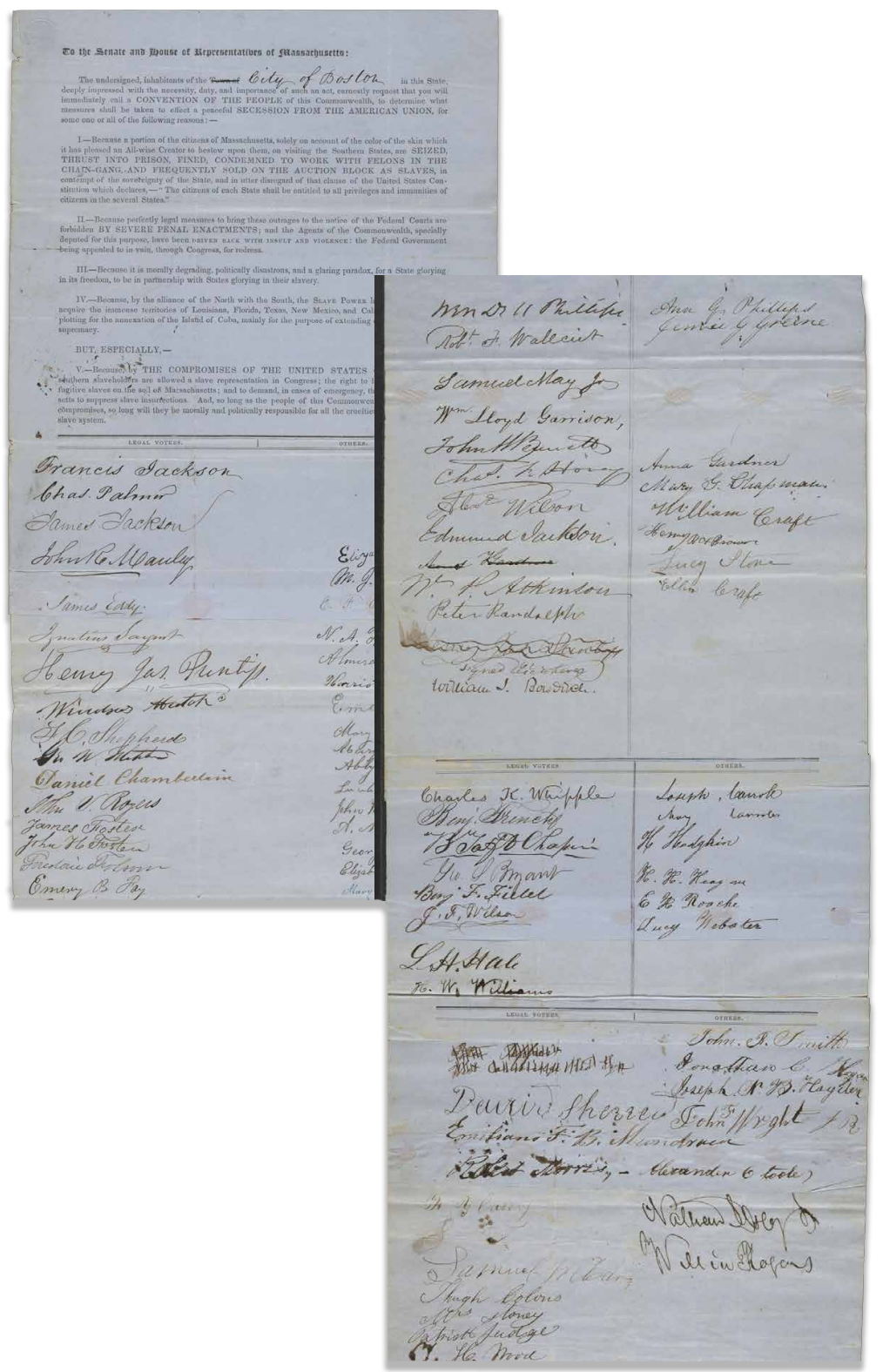The whaling port of New Bedford became a prime destination for fugitive slaves.
“The idea suddenly flashed across my mind of shutting myself up in a box, and getting myself conveyed as dry goods to a free state.”
- Henry “Box” Brown
”
Box Brown
One of the most celebrated escapes from slavery occurred in 1849. Settling in to a small box marked “This side up,” Henry “Box” Brown took a perilous trip by railroad and ferry. At one point the box was upside down for twenty miles on a ferry as passengers sat on top. Eventually arriving in New Bedford, his story became a sensation.
Resurrection of Henry Box Brown . . .

Petition, against the Fugitive Slave Act . . .
Harriett Jacobs
Harriet Jacobs’ Incidents in the Life of a
Slave Girl, published in 1861, detailed
her life in North Carolina and unwanted attention from her de facto owner
Dr. James Norcom. She first attempted
to escape by stowing away on a sailing
ship. Fearing discovery, she disembarked
before departure and spent seven years
hiding in an attic. Eventually she did
escape by sea and settled in New Bedford. Some thought, incorrectly, that her
book was authored by a white novelist.
- Jean Fagan Yellin
- Perry Hicks, LL
No Longer Yours
John S. Jacobs was Harriett Jacobs’ brother. His fourth owner
was a congressman from North Carolina. Traveling with him
in New York, Jacobs feigned loyalty. When the opportunity
came, Jacobs left a note for his master, with the salutation
“No longer yours.”
